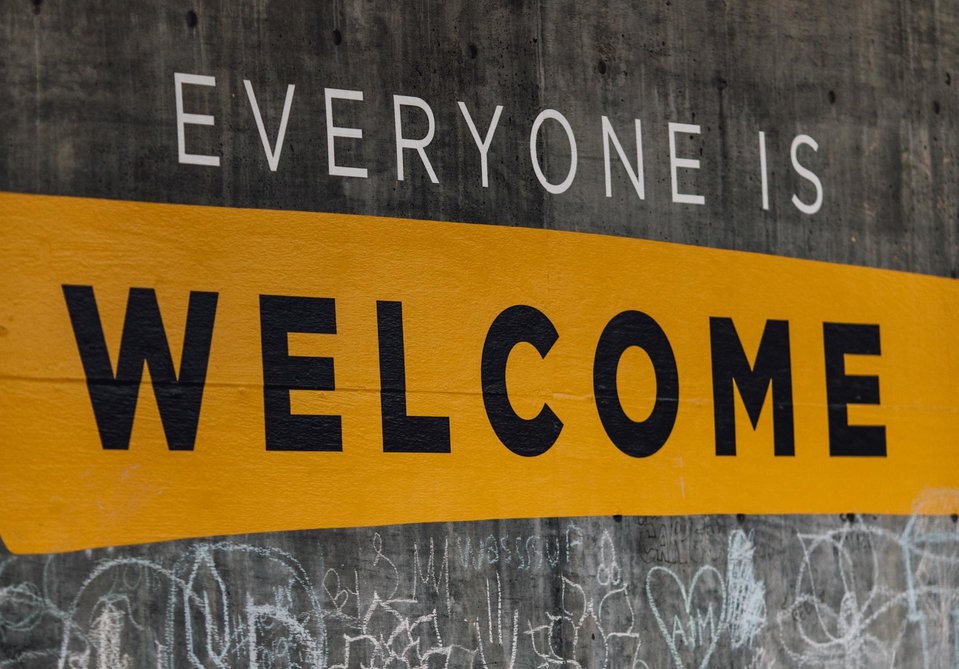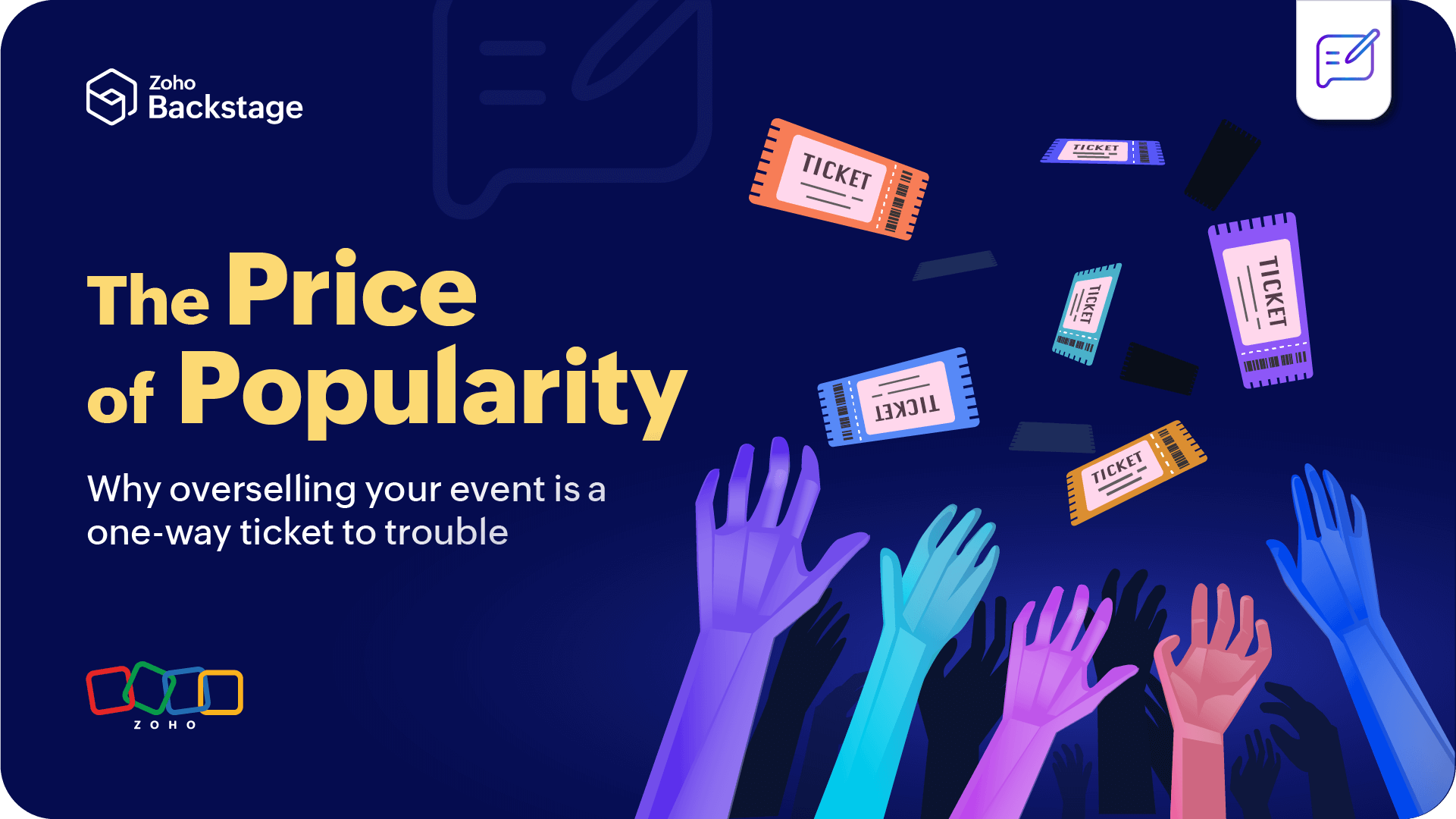Organizing accessible events: 9 tips for event planners
- Last Updated : August 18, 2023
- 3.0K Views
- 8 Min Read

One billion. According to the W.H.O., that’s the number of people who live with some disability. They’re also people the event industry tends to ignore when planning great attendee experiences that are not accessible.
Most often, this happens unconsciously. One reason could be that there’s a shocking lack of awareness about disability among the general public. Fewer still have any training. And as most of these disabilities are invisible—heart defects, mental illness, hearing impairment—it’s easy to overlook them. According to the Americans with Disabilities Act (ADA), any person “who has a physical or mental impairment that substantially limits one or more major life activity” is disabled. That’s quite a broad spectrum, and our approach to accessibility should be more holistic if we want to cover everything.
This will take a lot of effort on your part, but the result is worth every extra minute of work you put in. By hosting an accessible event, you increase your event’s reach, which means your profits will multiply, and you also get to build a reputation that your event satisfies all attendees. You can also take help from organizations that specialize in event accessibility like Accessible Festivals or Thrive Meetings and Events. While the former focuses on creating accessible experiences, the latter is all about inclusive food choices. These are just a few examples, but there are so many more organizations that aim to bring accessibility to events.
In this post, we’ve listed nine ways you can make your event more accessible. These are small changes, but we promise they’ll make for a memorable attendee experience, one that’s welcoming to all.
Choose a suitable site
An accessible venue paves the way for an accessible event. So that should be your foremost priority. When you’re scoping out a potential venue for your event, make sure it will accommodate all your attendees. Some things to take into consideration are:
Does the venue have an elevator or ramp access? Are doorways and other entrances at least 32 inches wide to accommodate wheelchair access?
Does it have enough space for everyone? Remember, disabled people take up more space than the average person. Some of them might come with an assistant or interpreter. People in wheelchairs also need extra space to maneuver.
Is the flooring safe? What’s the material used? How is the surface condition? Is it muddy, slippery, or uneven?
Does it have accessible restrooms with grab bars and automatic doors? You can also include all-gender bathrooms to be more inclusive.
Are there accessible routes to and from the event?
Is parking easily accessible for people with mobility issues? Can they get to the event from the venue without any hassle? Is there a covered drop-off and pick-up point?
Are there enough power points for attendees to charge their motorized wheelchairs and other specialized devices?
How is the quality of the environment? Is it too polluted or noisy?
As a lot of venues nowadays cover the basic accessibility requirements—you can use that as your starting point and work from there. One other thing you can do is give all potential venues an accessibility rating. This way you can shortlist the venues that are most accessible and choose one of them.
Subscribe to The Green Room
Sign up here and get all the most relevant MICE industry content delivered right to your inbox once a month.
By submitting this form, you agree to the processing of personal data according to our Privacy policy.
Mind your message
We are what we say. The language you use is a direct reflection of you and your event. Be sensitive to people’s feelings and don’t lay undue stress on their disabilities. Use people-first, neutral language. Don’t be stereotypical in your portrayal of them either. One thing we tend to do is pity them while at the same time hero-worshiping them. Both times we make them extremely uncomfortable. Instead, try to treat them the same way you would treat everyone else.
Words aren’t the only way we communicate. The images we use also matter. Don’t use stock photos mindlessly. And to be honest, we’ve all done that at one time or another. How many business conferences have you seen promote their events with men in suits? Or tech conferences with Asian men? Have you ever seen a conference use photos with disabled people in it? The next time you’re hosting an event, try to use more inclusive and diverse photos. The response, I assure you, will be extremely favorable.
Train your staff
Your crew should have at least some knowledge about handling the needs of disabled people. Teach your staff and volunteers how to communicate and interact with attendees without any bias. Sensitivity training can help them become more aware of their attitude towards disability and work to overcome it.
Some other things your staff can benefit from are emergency response training for taking care of people with accessibility needs and talking to people with communication barriers. Having members on your staff who’ve had certified accessibility training will also be a definite help. Recently, the Association of Writers and Writing Programs (AWP) brought in an accessibility coordinator to advise their staff.
Another good example is the American Library Association. Not only do they have an accessibility task force at their events, but they’ve also contracted with the Chicago Hearing Society’s executive director to look after accommodation and maintain an accessibility hotline.
Include a code of conduct
Though this isn’t compulsory, it can go a long way in assuring your attendees that your event is a safe place. You can use it to tell them your values and how committed you are to their safety. This is also the place where you define what is acceptable behavior at the event and tell people to be aware of others around them. Cloud Foundry has a code of conduct that goes into detail about how they prioritize safety and inclusiveness at their events.
Unlike your terms and conditions, where you talk about everything in detail, your code of conduct should be short, snappy, and to the point. It should be in simple language and easily readable. And lastly, make sure that you hold people accountable for breaking the code.
Consider communication barriers
People with vision or hearing problems might face communication issues that keep them from enjoying the complete event experience. However, a lot of these problems can be solved with just a little forethought. You can begin by laying out a few rules for all speakers and presenters. Tell them to talk slowly, avoid too much gesturing, and face the audience. This will help lip-readers, people with low vision, and interpreters to follow the conversation.
You can also hire sign language interpreters and get them to talk alongside your speakers. Other things you can do are investing in Communication Access Realtime Translation (CART) to convert speech to text automatically, having wheelchair-friendly directions for sessions, and including Braille on all signage at the venue. You can also use services like AIRA or Right Hear to help blind or low vision people navigate the venue in real-time.
Allow access for service animals
According to the ADA and most other disability acts, service animals should be allowed to accompany their owners to all places where the public has been invited. That means service animals should also be allowed to your event. One thing to keep in mind here is that you should never ask a person what their disability is. Instead, ask them what service the animal is providing. Or how it is helping them? Also remember, a handler can be asked to remove their dog from the premises only if it’s out of control or not house-broken. Allergies will not be considered.
If it’s confirmed that animals will be present at your event, you should also include facilities for them at your venue. Some things you’d typically need are drinking water facilities, a relief area, and food. The ADA has more information on managing service animals and you can use it as a reference point when dealing with service animals at your event.
Have an accessible event website
Everyone on the internet should be able to use your event website. This includes people with visual or hearing impairments, photosensitive issues, motor disorders, and cognitive disabilities. To make your website more accessible, consider doing the following:
Make the content on your website screen-reader friendly
Include alternative text for all images
Take care that the colors used in your website contrast well and the text is clear against the background
Avoid automatically playing media files
Have transcripts and captions for all videos
When working with ticketing software, choose one that has accessible forms. If you’ve got the budget, you can also get website designers who specialize in accessible design to build your event website.
Make event activities more accessible
Last year, the Marvel Comics pavilion at NYCC did not have ramps, which meant disabled people couldn’t meet the celebrities. Not a very satisfying experience there, was it? However, with just a few simple steps, we can make most activities accessible to everyone. If you’re planning to have a dance at your event, you can invest in a larger dance floor to make it accessible for people on wheelchairs like the American Association of Retired Persons (AARP) did at a recent event.
At the 2019 SXSW activation, Sony hosted a “cross-border” experience with their CAVE without a LIGHT using sound and touch instead of visual imagery. The lesson here is that if you want to do something badly enough, you can find a way to do it. Not only is this ethically right, but it also helps you reach a wider audience—one that wouldn’t attend your event for any other reason.
Talk about accessibility
Finally, include information about accessibility in all your marketing campaigns. Don’t just tell people your event is accessible, tell them how accessible your event is. Describe what facilities you have, how you’ve made activities more accessible, and what support they can expect from you. At the same time, include questions about accessibility in your registration and RSVP forms to get more information from your attendees like their dietary choices or if they have other special requirements.
Remember, by being upfront about your event’s accessibility, you enable your attendees to make informed decisions. Besides, your accessible event will be of no use if people don’t know about it at all.
With these tips, we’ve barely scratched the surface on accessible events. There’s so much more you can do. Every event will come with its own set of accessibility challenges, and you’ve got to be flexible in your approach towards handling them. Chances are, you’ll make a lot of mistakes, at least at the beginning. But what matters most is that you tried and your audience will surely appreciate the effort you put into making it work. And with time and experience, it’ll get easier.
If, like us, you're more of a social person, let's connect on Twitter (@ZohoBackstage) and we'll keep you up-to-date with all the latest event news.
 Nisha
NishaMarketing and content at Zoho Backstage. Cultural misfit. Armchair traveler. Productivity geek. Sometimes, I write poetry. Sometimes, it rhymes.








